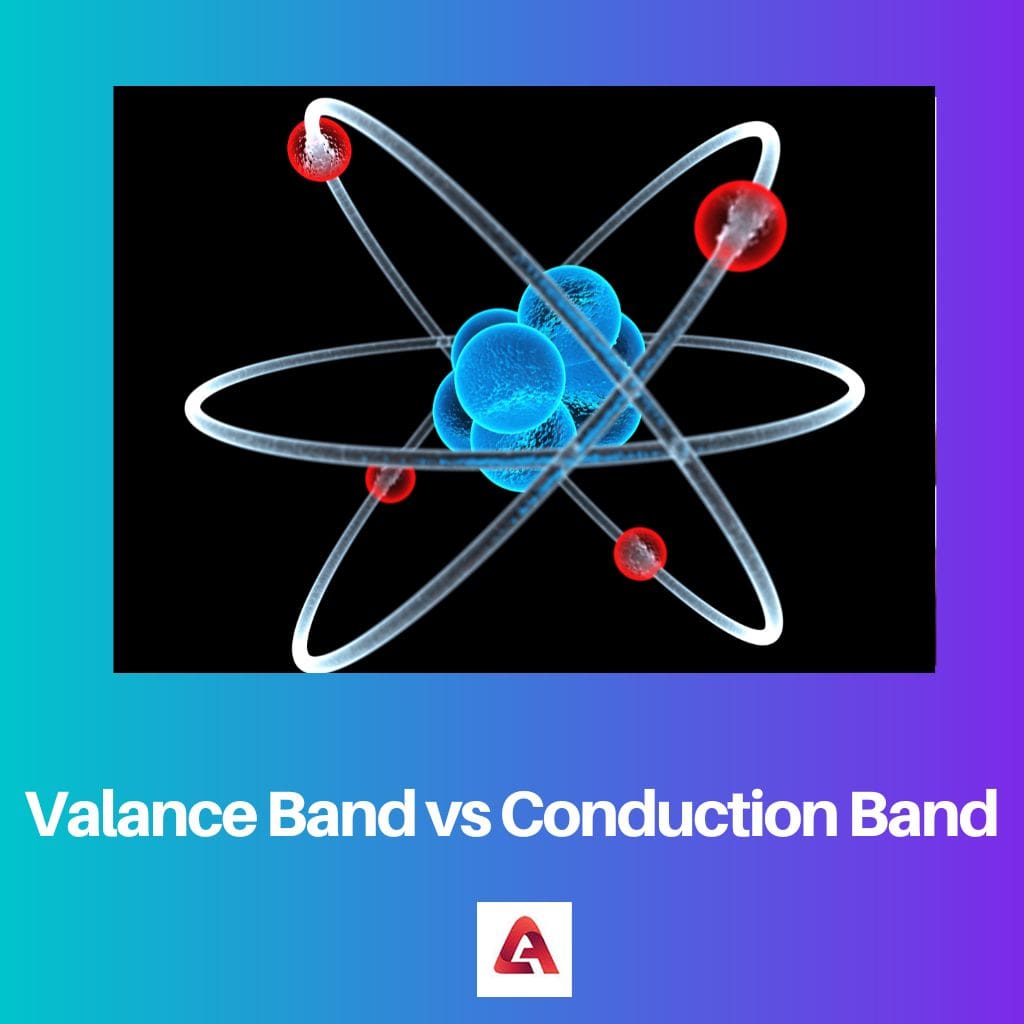The valence band is the highest energy band set apart by a band gap in which electrons are normally present in a material at low temperatures. The conduction band is the lowest energy band in which electrons are not tightly bound to the atomic nuclei and are free to move around the material.
Key Takeaways
- The valence band is the range of energy levels in a solid material where electrons are bound to their parent atoms. The conduction band allows electrons to move freely and participate in electrical conduction.
- In conductive materials, the valence and conduction bands overlap, allowing for easy electron movement, while in insulators, there is a significant energy gap between the two bands.
- Semiconductors have a smaller energy gap between the valence and conduction bands than insulators, allowing for controlled electrical conductivity under various conditions.

What is Valence Band?
The valence band is defined as the energy band that contains the valence electrons present in the outermost shell of an atomic structure. It is commonly abbreviated as VB. Electrons are present in the valence band, so it is either partially or completely filled. The valence band is present below the forbidden energy level in the energy band diagram. The forbidden energy gap of the Fermi energy level is defined as the energy gap between the valence band and the conduction band.
The valence band is at a comparatively lower energy level than the conduction band. So when a certain amount of external potential is applied to this band, the electrons tend to move out and transfer towards the higher energy state for effective conduction through the material. The electrons that move out of the valence band go to the conduction band and become the conduction electrons.
What is Conduction Band?
The conduction band is the energy level containing the free electrons. These free electrons are valence electrons that are free to move around the atomic structure and are the reason behind the conduction of heat and electricity. The conduction band is abbreviated as CB. The conduction band is present above the forbidden energy level in the energy band diagram.
The conduction band gets its name as it is completely responsible for the conduction of electricity in the materials. As the electrons in the conduction band are required to have a higher energy than the Fermi energy, this band may sometimes be empty or partially filled.
Difference Between Valence Band and Conduction Band
- The valence band is at a lower energy level as compared to the Conduction band.
- The valence band comprises valence electrons present in the outermost shell of an atom, whereas the conduction band contains free electrons responsible for the conduction of electricity.
- The valence band is located below the forbidden energy gap (Fermi energy level) in the energy band diagram, whereas the conduction band is located above the Fermi level.
- Electrons present in the valence band leave it when some external energy is applied, whereas electrons reach the conduction band with the help of some external energy.
- The valence band is either partially or fully filled with electrons, whereas the conduction band is either empty or partially filled with electrons.
Comparison Between Valence Band and Conduction Band
| Parameters of Comparison | Valance Band | Conduction Band |
|---|---|---|
| Definition | The energy band comprising of valence electrons of an atom | The energy band comprising of free electrons of an atom |
| Location in the energy band diagram | Present below the Fermi energy level | Present above the Fermi energy level |
| Nuclear forces | The valence band electrons are strongly bound to the nucleus by strong nuclear forces | The conduction band electrons are weakly bound to the nucleus with weak nuclear forces |
| Electron density | High electron density as the valence band has more electrons per unit volume | Low electron density |
| Flow of current | As there are electrons present in the valence band so there is no flow of current | The free electrons move anywhere in the conduction band so there is a flow of current |
